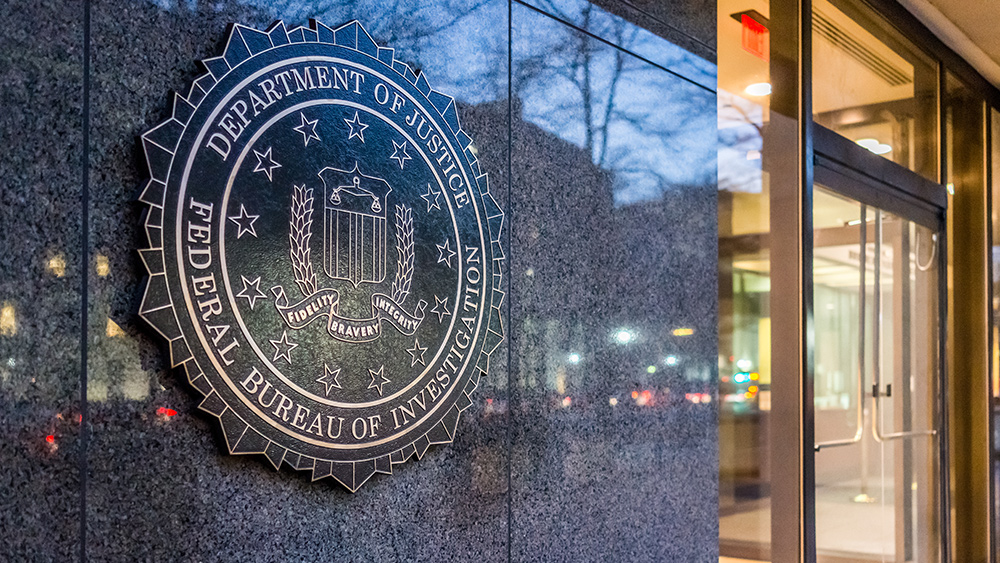The First Bank Failure of 2024 Won’t Be the Last
from Birch Gold Group:

From Peter Reagan for Birch Gold Group
Breaking news: The Wall Street Journal announced the first bank failure of 2024…
Regulators are set to seize the troubled Philadelphia bank Republic First Bancorp and are near a deal to sell it to another lender, the fourth high-profile bank failure since last spring.
What happened to Republic First?
The same thing that happened to the others:
TRUTH LIVES on at https://sgtreport.tv/
Republic First faced some of the same problems as the three regional banks that failed last year: paper losses on assets that lost value as interest rates rose and high proportions of uninsured deposits that can quickly flee.
Why do I think this won’t be the last bank failure of 2024? WSJ captured the situation in a nutshell:
But regional banks are still on shaky ground. Two years of higher rates have forced them to pay more interest on deposits, which has increasingly eaten into profits. It will be harder for them to absorb the costs of potentially stricter regulatory requirements and technology updates, compared with megabanks… And some hold high concentrations of loans on offices and other commercial real estate that are under pressure.
I’m going to explain the issues banks are facing in greater detail, and then explain why I don’t think this will be the last bank failure of the year.
When interest rates rise, debt loses value
Two years ago, the Federal Reserve finally, reluctantly began their attempt to get inflation under control. This meant raising interest rates off the floor. It’s shocking to realize that, for more than half of the last 16 years since the Great Financial Crisis, interest rates were near zero:
Raising interest rates effectively makes credit more expensive (learn more about how interest rates work). Borrowing money costs more.
This has the effect of cooling off economic activity. Generally speaking, entrepreneurs and businesses become more thoughtful and cautious when the cost of capital goes up. Mortgage rates, car loans and credit card APRs rise, too, which makes consumer spending more expensive.
There’s one small problem, though. Higher interest rates lower the market value of older loans issued at a lower rate. (See the appendix below for details.) In a nutshell, banks that made lots of loans at low interest rates are NOT in good shape.
And that’s not all that’s putting pressure on their bottom lines…
Higher interest rates cut into bank profits
In order to make loans (and make money), banks need deposits. People like you and me to open a checking or savings account. And that’s not easy, per this WSJ report:
When the Fed started raising interest rates to fight inflation, the conventional wisdom was that it would be a boon for Main Street banks. They were expected to increase the rates they charged on loans faster than those paid to depositors, pocketing the difference. Instead, the opposite is happening.
When interest rates are low, like for the last 16 years, banks don’t have to pay depositors very much (if anything) on their cash.
When interest rates rise, though, banks must raise the rates they pay depositors in order to stay competitive. This lowers profits significantly, and that’s why big banks’ first-quarter profits were so awful when they were released earlier this month.
Banks can make new loans at higher rates, but first, they need to pay up to secure more deposits. Or, as bank CEO Mike Daniels said, “Our raw-material costs just went up 600%.”
“It’s probably the greatest deposit competition that I’ve seen in my banking career,” said Chip Reeves, CEO of a regional bank and 30-year industry veteran.
But that’s not the only thing weighing down bank profits…
The commercial real estate dumpster fire
Regional banks are heavily involved in lending to commercial real estate developers. When the Covid-19 pandemic hit, the mass migration to work-from-home meant a lot of businesses didn’t need office space any longer. This left dozens of office towers increasingly vacant, increasingly unable to earn revenue.
Wolf Richter has chronicled the commercial real estate saga in great detail. He recently told the story of a $300 million loss on a single building.
The short version is, when borrowers can’t or won’t pay their mortgages, banks are often left with the keys to a vacant building worth half (or less!) than the outstanding balance.
And it’s getting worse by the day.
So where does that leave us?
Not even the FDIC can put lipstick on this pig
FDIC Chairman Martin Gruenberg presents quarterly reports on the American banking system. These presentations aren’t widely reported, and I have no idea why… I find them fascinating.
Most recently, Gruenberg delivered a summary of the 2023 fourth quarter performance. Here are a few highlights:
- Net income fell 43.9%
- Unrealized losses on banks’ assets total $478 billion
- “deterioration is evident in commercial real estate (CRE) loans and credit card portfolios”
- Delinquency on CRE loans is now at its highest level since 2014
- Delinquencies on credit card loans rose to their highest levels in 13 years
- The FDIC’s deposit insurance fund has a reserve ratio of 1.15% or $1.15 for every $100 insured
The U.S. banking system is underwater by $478 billion, which is astonishing. To put this in perspective, SVB failed when it was forced to realize a $16 billion loss. In other words, potentially there are 30 more SVB-sized catastrophes ahead of us.
The FDIC’s “Problem Bank List” has 44 names on it. Well, presumably 43 names after today, assuming Republic First was on the list.
And the Bank Term Funding Program (BTFP), the Federal Reserve’s emergency loan program for banks, expired on March 11.
What’s next?
One year ago, I told you that the 2023 banking crisis wasn’t over.
I told you that this sort of crisis unwinds more slowly than you expect.
A lot of people listened! They saw the price of gold rise 23% (and silver 16%).
More than that, though, they had a sense of relief. They were able to tune out the finance news and focus on living their lives.
Forget about the price of gold. How much is peace of mind worth to you? How much is the stress of worrying about your financial future costing you in terms of health, of attention and missed opportunities to enjoy your life?
Let your concern about your savings deliver the message that you are not properly diversified with safe-haven, inflation-resistant assets like physical precious metals. Don’t just fret! Take the steps you need to so you can stop worrying and start living.
Appendix
An introduction to the time value of money, discounted cash flow analysis and mark-to-market pricing
Imagine you’re a bank. You issue a $100,000 mortgage at a 3% APR to a successful young family. The mortgage rate is based on the Effective Federal Funds Rate (EFFR) or “prime” rate of 0.25% plus a premium for making a 30-year loan.



